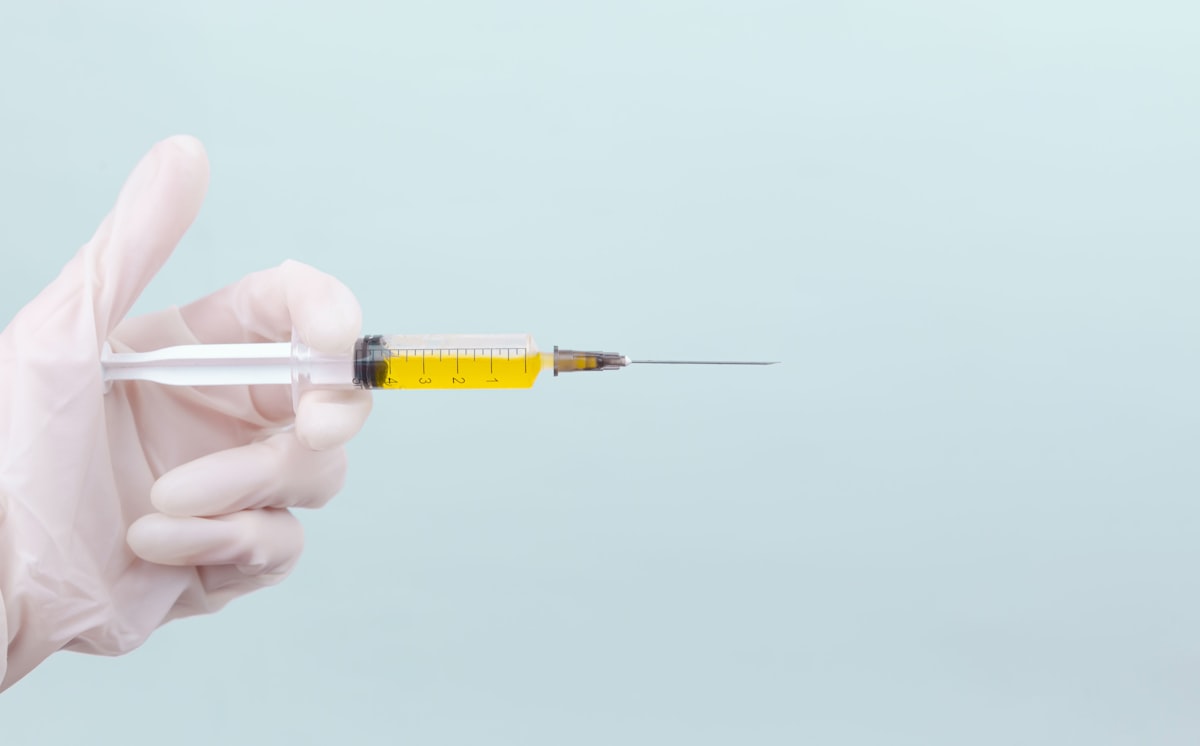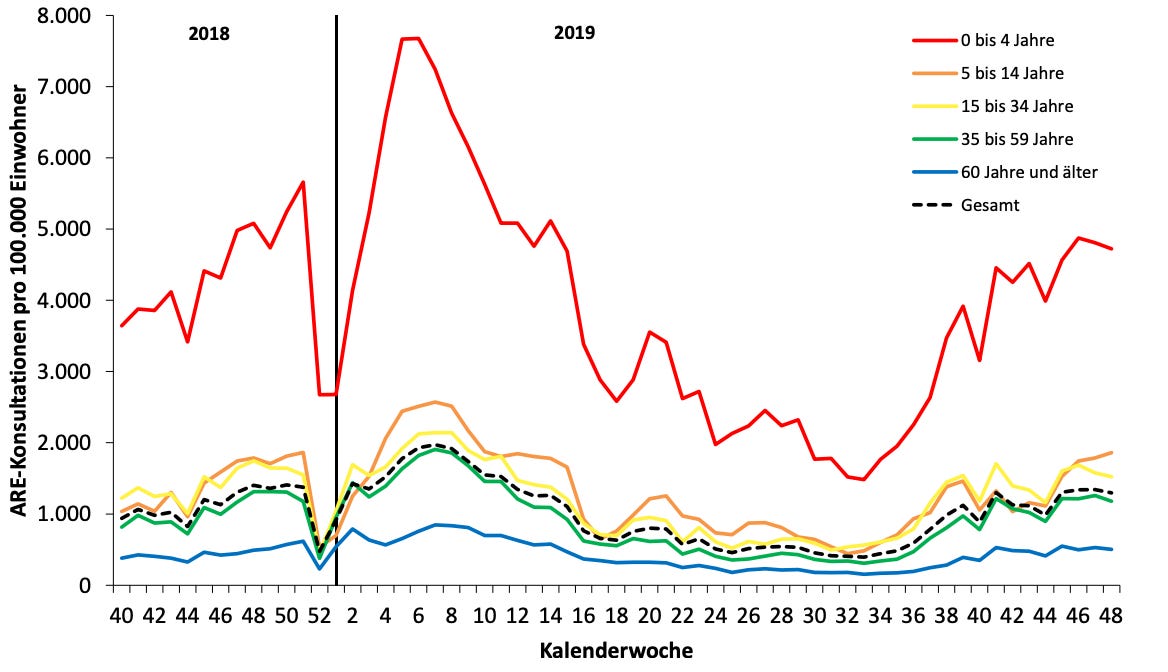"RSV Wave Underway" screeches the German press, as winter viruses rise unremarkably and in accordance with long-standing seasonal trends

Now that the EMA has approved new RSV vaccines, journalists have another virus to stir anxiety about.
During the pandemic, journalists discovered a new occupation, one which was particularly appealing for the small effort it required. This occupation consisted of consulting any of the numerous Covid dashboards and weekly virus statistics supplied by health authorities and pasting the numbers they found there into tiresome one-dimensional articles on which numbers happened to be going up and which numbers happened to be going down. Now that the dashboards have gone dark and nobody bothers to test anymore, our journalists have been deprived of their convenient pastime. One suspects they are not happy about this.
In Germany, all that remains to these uninspired, myopic journalists are the weekly reports compiled by the tireless influenza tabulators of the Robert Koch Institut. Before 2020, the flu sniffers labored in obscurity, but now their weekly reports routinely generate headlines. Like the Covid headlines which preceded them, these are all about which numbers are going up and which numbers are going down. In this way, the reading public can continue to enjoy the virus anxiety to which they have grown accustomed. The Deutsche-Presse Agentur appears to drive the greater part of this reporting, and their dogged virus updates are recirculated reliably by most of the national and regional papers. It is cheap and easy content.
This week, it is RSV that is going up. “The RSV Wave Has Started in Germany,” say Der Spiegel and tagesschau. “Respiratory tract infections: RS-Virus Wave Underway” declares ZDF. “Corona, flu, RSV: The infection situation in Bavaria,” is the offering of Bayrischer Rundfunk; “Wave of infections continues to grip Saxony: Covid, influenza and RSV,” is an equivalent piece from the Leipziger Volkszeitung. And because we are mostly asked to worry about those viruses for which there exist vaccines, the Süddeutsche Zeitung supplies its own write-up on “RSV Protection: These New Vaccination Options are Available.”
Now, it is true that RSV infections are on the rise. This is because RSV is among the solstice viruses that become especially active in the darkest months of the year. So far, however, everything suggest that RSV infections are in line with long-standing historical trends. The latest RKI report shows that the “consultation incidence” for the critical age group of 0-4 year-olds – the number of kids seeing the doctor because of acute respiratory infections – is about 5,000 per 100,000, or 5%.

This is the age group most heavily affected by RSV, so we can assume the virus is driving a good part of this trend. Past RKI reports show that this incidence is totally normal: In 2018 and 2019, for example, the consultation incidence for this age group was also at or just below 5,000 in early December.

By all accounts, the situation is vastly better than last year, when children were being treated at twice the normal rate. The immunity deficit that ravaged the young after the end of pandemic measures has been repaid, and we are once again in equilibrium with the respiratory syncytial virus.
This doesn’t matter and we get the mindless contextless number-go-up reporting anyway, because everything is stupid now, and few things are as stupid as post-Covid health reporting. I’ve searched high and low for pre-pandemic articles on RSV infections, and beyond a few items in the local press I can’t find anything of note. This anxiety about RSV is a legacy of the pandemic, and in the near term I guess it will be used to encourage RSV vaccine uptake in pregnant women and infants. I very much doubt that these vaccines will do anything to alter seasonal trends; as far as I can tell, nobody is even claiming that they will. If this time next year we see the same hospitalization and consultation incidences that we always have, we’ll know the vaccines are for nothing. That won’t stop the vaccinators, though.